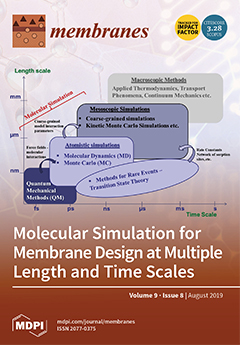BaZr
0.8Y
0.2O
3-δ (BZY20) is promising to be applied as an electrolyte in fuel cells, electrolysis cells, etc. However, when a half cell composed of a BZY20 electrolyte layer and a BZY20-NiO composite anode substrate is co-sintered (1400–1600 °C), Ni
[...] Read more.
BaZr
0.8Y
0.2O
3-δ (BZY20) is promising to be applied as an electrolyte in fuel cells, electrolysis cells, etc. However, when a half cell composed of a BZY20 electrolyte layer and a BZY20-NiO composite anode substrate is co-sintered (1400–1600 °C), Ni diffuses from the anode substrate into the electrolyte layer. Y content in the electrolyte layer decreases dramatically, since BZY20 cannot be equilibrated with NiO at such high temperature. Such Ni diffusion and Y loss are detrimental to the electrochemical performance of the electrolyte layer. In this work, we added MgO-NiO solid solution into the anode substrate to adjust the NiO activity (
aNiO) during the co-sintering process, and used three different co-sintering methods to control the BaO activity (
aBaO). The results revealed that by decreasing
aNiO in the system, the as-co-sintered electrolyte layer had the composition shifting towards the direction of high Y and low Ni cation ratios. A clear correlation between the intra-grain concentration of Ni and Y was confirmed. In other words, to prepare the electrolyte with the same Y cation ratio, the Ni diffusion into the electrolyte layer can be suppressed by using the MgO-NiO solid solution with a high MgO ratio and a low Ni ratio. Moreover, by increasing
aBaO, we found that the Y cation ratio increased and approached the nominal value of the pristine BZY20, when Mg
1−xNi
xO (
x = 0.3 and 0.5) was used. In summary, both
aNiO and
aBaO play important roles in governing the composition of the electrolyte layer prepared by the co-sintering process. To evaluate the quality of the electrolyte layer, both the intra-grain Y and Ni concentrations should be carefully checked.
Full article






